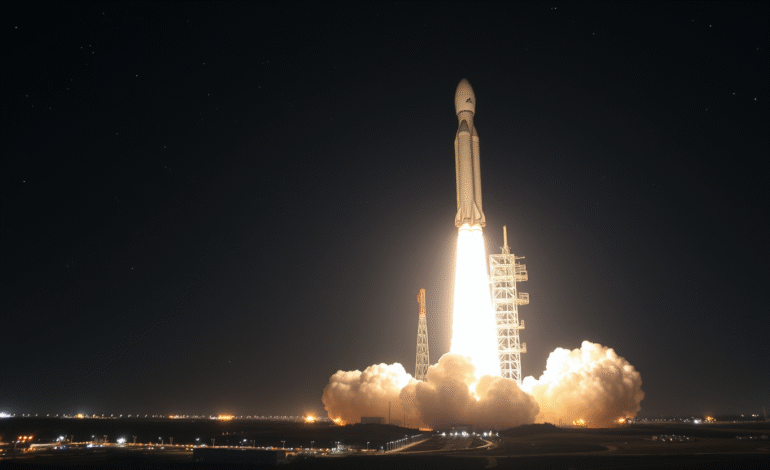SpaceX’s Starship Rocket Achieves Two Crucial Milestones in Historic Test Flight, Bringing Mars Mission One Step Closer

In an impressive display of engineering prowess, SpaceX’s colossal Starship rocket soared into the night sky on its tenth test flight, achieving two significant milestones and drawing a line under a series of setbacks. The towering 403-foot structure took off from SpaceX’s launch facility and burgeoning city, Starbase, at 7:30 pm ET following two earlier postponements this week.
Powered by 33 methane-fueled Raptor engines, the vehicle ascended swiftly before separating approximately three minutes after lift-off. On its descent, the Super Heavy booster underwent a novel maneuver: intentionally shutting down the engines intended for landing and transitioning to backup engines. This test aims to offer insights into the Booster’s performance in the event of engine failure. The test seemed to go as planned, culminating in a precise splashdown in the Gulf of Mexico.
Meanwhile, the upper stage, known as Starship, penetrated space for the first time on a Starship mission. Upon reaching space, it opened its Pez-like payload door and released eight Starlink mass-similar satellites – a capability SpaceX had planned but failed to demonstrate in previous missions. The company also managed to rekindle one of the Raptor engines in space before guiding the vehicle towards the Indian Ocean for a splashdown, rollover, and subsequent explosion.
During its descent, the Starship’s exterior was subjected to intense heat during atmospheric reentry, providing an exceptional testing ground for the upgraded thermal-protection system. SpaceX utilized this test to experiment with various techniques such as removing tiles from sections of the Ship to evaluate the performance of its “skin” during reentry, and testing a new metallic tile and an actively cooled tile.
Perhaps most significantly, the upper stage completed the entire test and splashed down in the Indian Ocean without losing communication with SpaceX engineers. During the last flight, the Ship reached space but lost control during the coast phase, preventing the payload doors from opening. It appears that these issues have now been resolved.
This test marks a substantial progression for the Starship program, a venture SpaceX hopes to eventually use to transport humans and cargo to Mars. Although SpaceX still needs to navigate several demanding technical hurdles before it can reach this goal, it took a significant step forward tonight.






